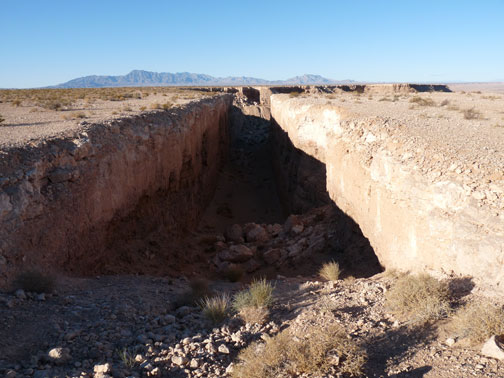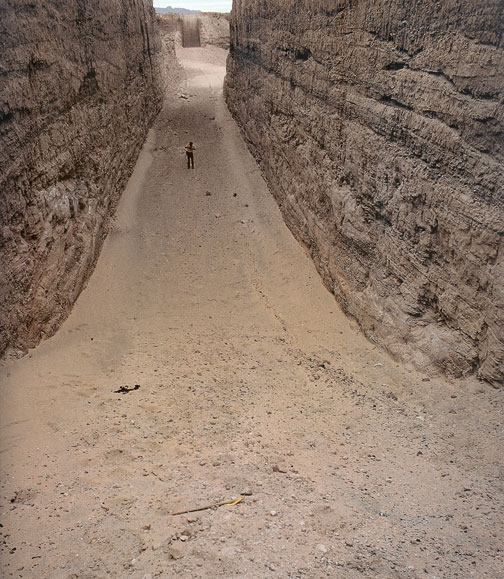Revisiting Michael Heizer's Double Negative

Double Negative in the late afternoon
Like most things in life, it always takes you a little longer to find it than you had anticipated. I was driving across the top of Mormon Mesa, outside of Overton , Nevada, looking for Michael Heizer's Double Negative. Double Negative was conceived in 1969 and completed in 1970. Incredibly, Heizer was only 24 years old when it was completed. I had been to Double Negative a couple of times about ten years earlier. I lived in Las Vegas at the time and experiencing the work changed my life. I suppose in some way, I still I am trying to coming grips with what I had experienced during those trips.
When Heizer went out to the edge of Mormon Mesa in 1970 his tools were a bulldozer, dynamite, probably a survey kit and a crew talented and brave enough to be able to make his conception a reality. He received funding for the lease of the land and support for the construction costs by the gallery owner Virginia Dwan. At the time the cost of the work was about $9,000. The work itself is two channels cut into opposite sides of the mesa. Each channel is approximately 9 meters deep and 10 meters wide. The western cut is about 230 meters long while the west cut is shorter, 100 meters long. Approximately, 244,800 tons of sand stone and rhyolite were relocated to make the work. The work is so large that there is not really an equivalent in the history of Western Art. It is longer than the Empire State Building is tall. When I was looking for the work and I was examining some of the valleys on the road to Double Negative, I was impressed with the fragility of the edge of the mesa. The edges are, after all, in a constant state of erosion. After the work had been marked, it must have taken an extremely brave person to make the first cut, maybe 6" or a 1' deep, and push it off the edge of the mesa. The drop off is extremely steep. There was no guarantee that the bulldozer would not just the follow the material off the edge of the mesa if the edge had given way and fallen down toward the river below. Everyone must have been holding there breaths because there would have been no way to know if the edge could support the weight of the bulldozer until they tried it. As work progressed it probably got a little easier and any large rocks that could not have been removed by the bulldozer would have been dynamited. After approximately, two weeks the excavations of the cuts were complete and the Heizer's initial conception of the work was complete. More...

Double Negative soon after completion
